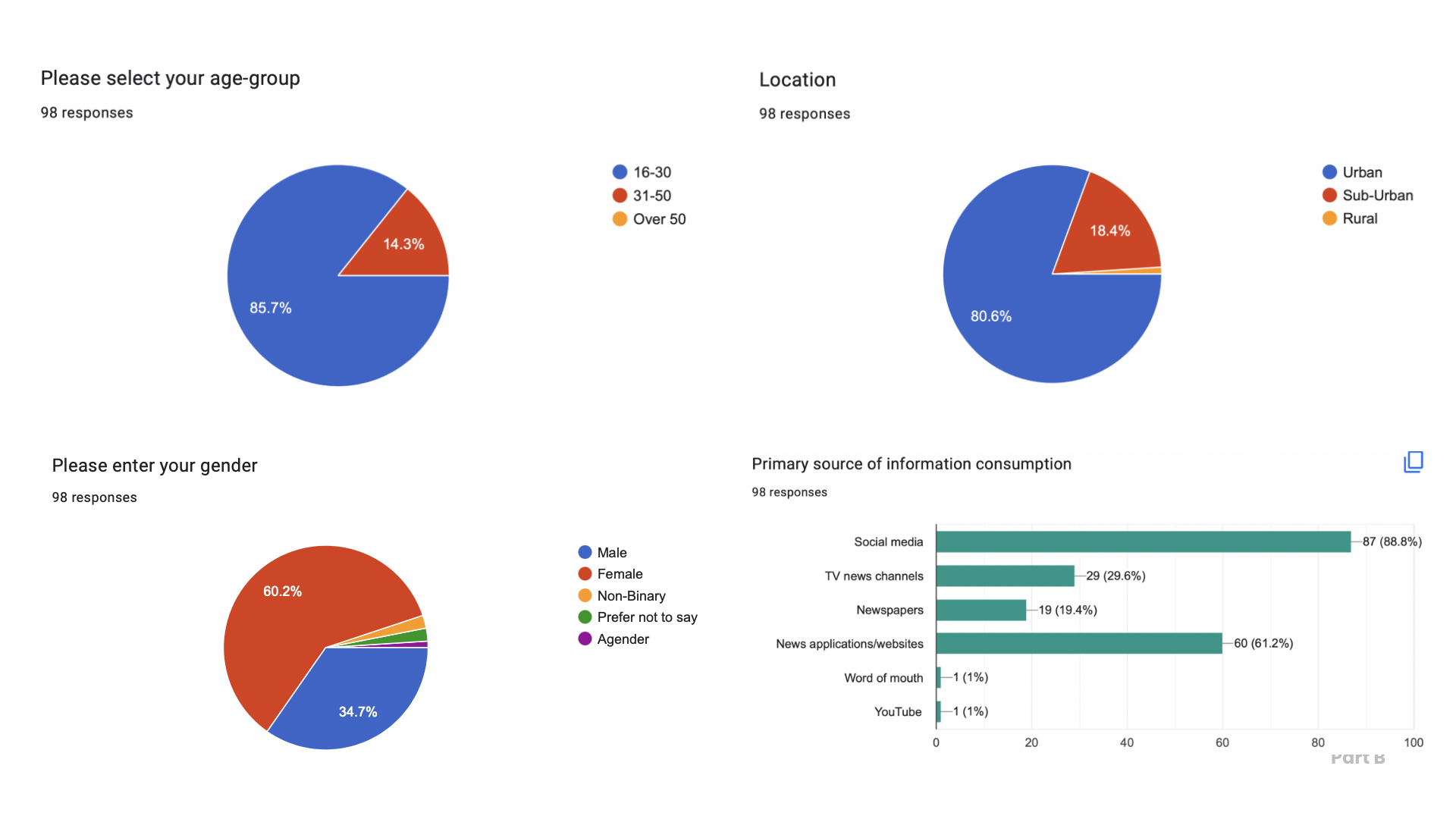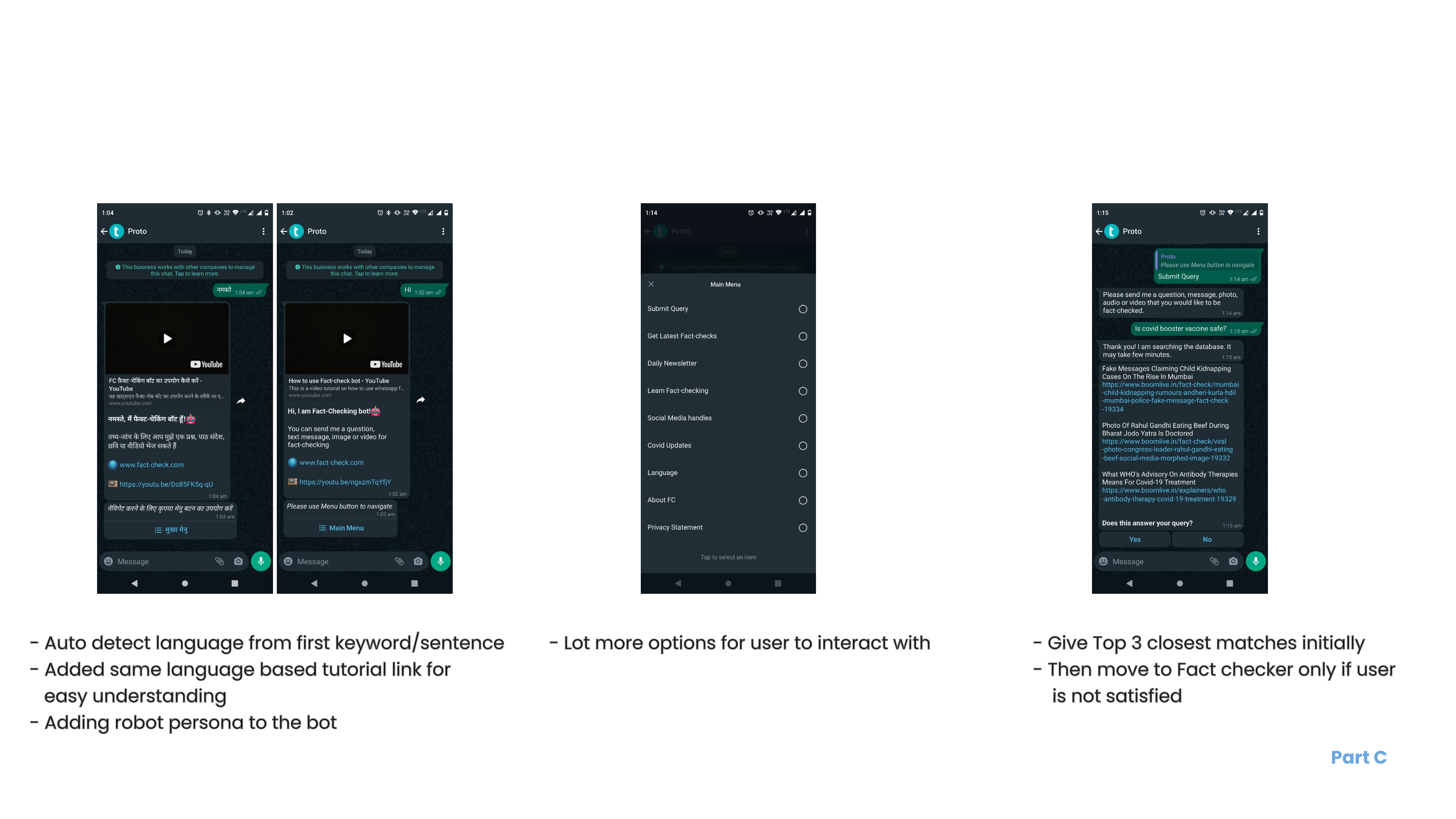Fact-checking services
Redesigning Whatsapp-based service (2022)
OVERVIEW
Summary
This project was part of service design studio at my college. Initially, we were thinking of working on fact-checking service as a whole but then we narrowed it down to Whatsapp-based services. We were able to research, ideate, develop prototypes and test our design. We proposed an improved Whatsapp chatbot for fact-checking service.
Role
UX Designer
team of 2
Client
Academic project
Srishti Manipal
Timeline
Aug-Sept 2022
(5 weeks)
Tools
Miro, Adobe suite,
Turn.io
CONTEXT
Motive
During covid-19 pandemic misinformation was spreading around like wildfire. Many fact-checking organizations were created to tackle this problem. We were curious to explore and learn more about these services and understand why they aren't more popular.
PROCESS
We used the double-diamond process of convergence and divergence for this project.

SECONDARY RESEARCH
Literature review
My teammate gathered various research papers and articles around fake news and fact-checking. We got to know about different mediums and types of fake news.

Desk Research
We started looking into existing standards and guidelines set by the IFCN (International Fact-Checking Network)
Ecosystem mapping
We noted down all the fact checking organisations and the ones providing whatsapp service.

Comparative analysis
We studied all the 11 organizations mentioned on WhatsApp's official website. It helped us understand the similarities and differences between the working of these organizations.

Testing
We tested out all of these services and noted all the features and flows for each one.

PRIMARY RESEARCH
Expert interview
After our competitor analysis, we found some data missing in the tables. So, we emailed these organizations asking about these details and additional questions about their working, barriers, etc.
We got a reply from 3 of the organizations. We also contacted one of our seniors who had researched in a similar area and got some insights from their body of work.
Survey
We created a survey to understand people's experiences and perspectives about fact-checking services.
User Interview and Probe
We then did 10 user interviews to capture more details. We also planned small activity to see how users respond to mix of fake and genuine news and how they go about determining the same.
Personas, Anti-persona and journey mapping
Based on the research, we created multiple antipersonas and personas with scenarios and journey maps.
DEFINE
Clustering
We gathered all the opportunities and clustered them together into groups.

HMW questions
From these clusters we were able to frame better How Might We questions:

IDEATION
Brainstorming
After framing HMW questions, we generated multiple ideas for each of them.

Evaluation
We evaluated the ideas based on 3 parameters to understand feasibility and effectiveness.

PROTOTYPE
Iteration 01
We started by working on an improved flow for the chat based service. Then, in order to prototype, we use Turn.io. It is a Whatsapp API based dashboard that allows us to create custom chat logic and automation. We got a free sandbox trial and re-created the flow by coding the logic using ruby language.
Testing
We forwarded the link for chatbot to the users we had already interviewed and gathered their feedback. It was mostly positive.
Few of the complaints were chatbot not responding to commands other than 'Hi'.
Iteration 02
We were able to automate few more words and also for hindi language. In similar way, we can also add other Indian languages.
We couldnt create menu subsections due to limited features available in free sandbox account.

Solutions
After few more testings, our improved chat based service was ready.
REFLECTIONS
Through our research, we gained a solid understanding of how fact-checking organizations operate. While comparing all 11 organizations was challenging, we managed to analyze them in detail. Developing a working prototype also helped us grasp the technical constraints developers might encounter, which allowed us to refine our ideas further based on their feasibility.
Moving forward, our next steps include interviewing fact-checkers to gain deeper insights, making the bot more engaging for users, and connecting the prototype to a public database for future testing. These efforts will help us test the system in real-world scenarios and improve its functionality.




















